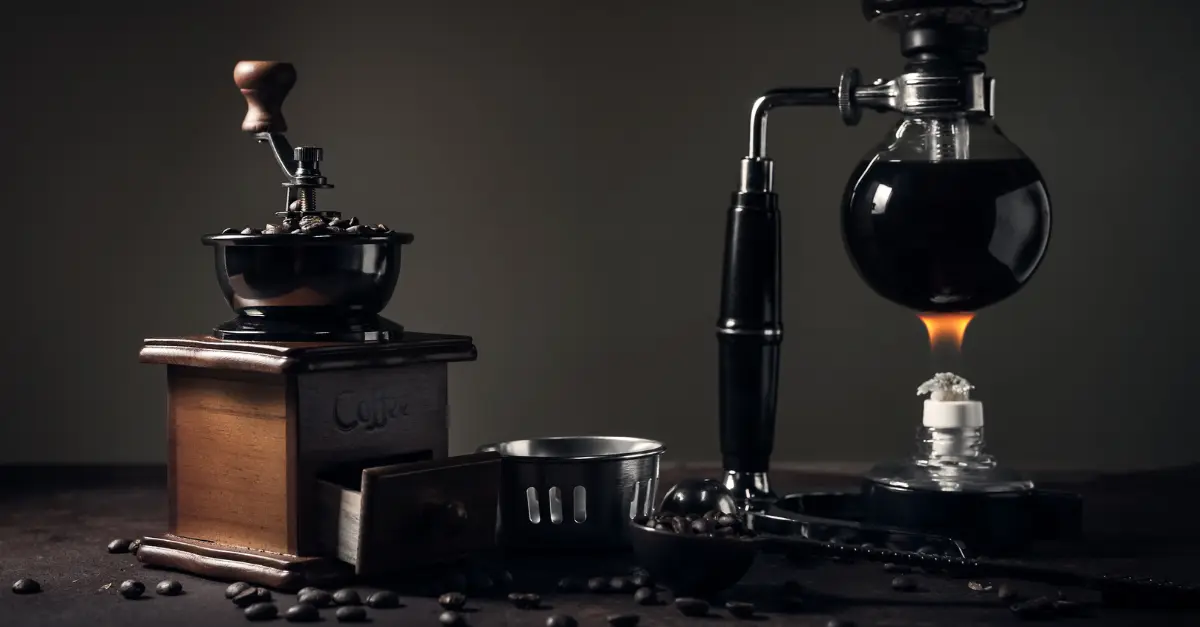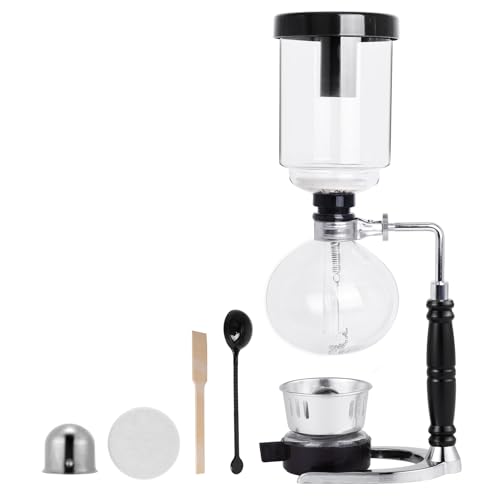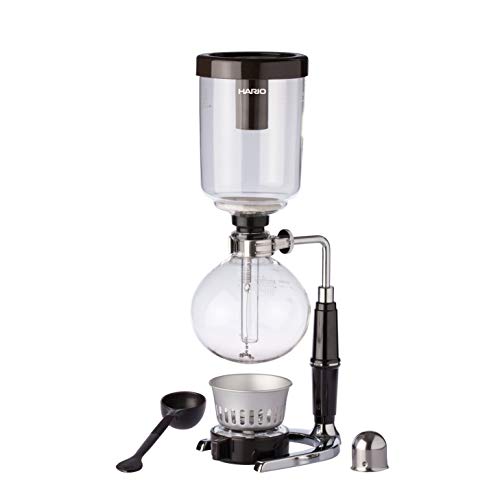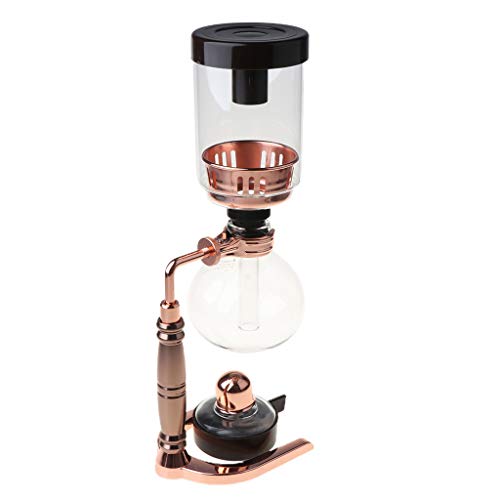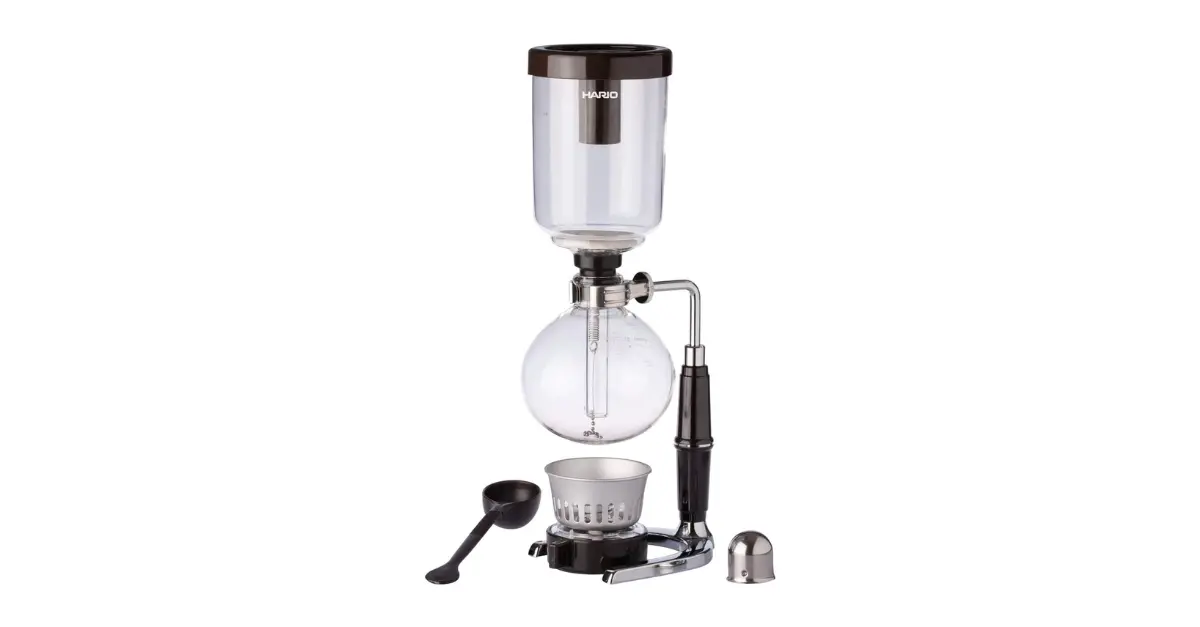Welcome to the world of Japanese coffee makers, where precision, craftsmanship, and an unwavering dedication to quality converge to create an extraordinary coffee brewing experience! Japan’s rich coffee culture and deep appreciation for aesthetics have given rise to a remarkable range of coffee makers that blend functionality with elegance. From the iconic siphon brewers to the cutting-edge innovations of modern times, Japanese coffee makers have captured the attention and admiration of coffee enthusiasts worldwide. In this article, we will embark on a journey to explore the history, benefits, and unique features of Japanese coffee makers, delving into their captivating designs, brewing techniques, and the unparalleled flavors they unlock. Join us as we uncover the secrets behind the allure of Japanese coffee makers and discover how they can elevate your coffee brewing ritual to new heights.
What is a Japanese Coffee Maker
A Japanese coffee maker, often referred to as a “siphon” or “vacuum” coffee maker, is a unique brewing device that uses a combination of vapor pressure and vacuum suction to extract coffee flavors. It typically consists of two chambers, one for water and another for coffee grounds, connected by a tube. As heat is applied to the bottom chamber, the water vapor rises, creating pressure and forcing the water to mix with the coffee grounds. Once the heat source is removed, the brewed coffee filters back into the bottom chamber due to the vacuum created. This method is known for producing a clean and flavorful cup of coffee, highlighting the nuances of the beans. Japanese coffee makers are admired for their precise engineering, aesthetic appeal, and the theatrical experience they offer during the brewing process.
Featured Products
YUCHENGTECH Japanese Coffee Maker
⭐ 4.4/5 • 💰 ~$38
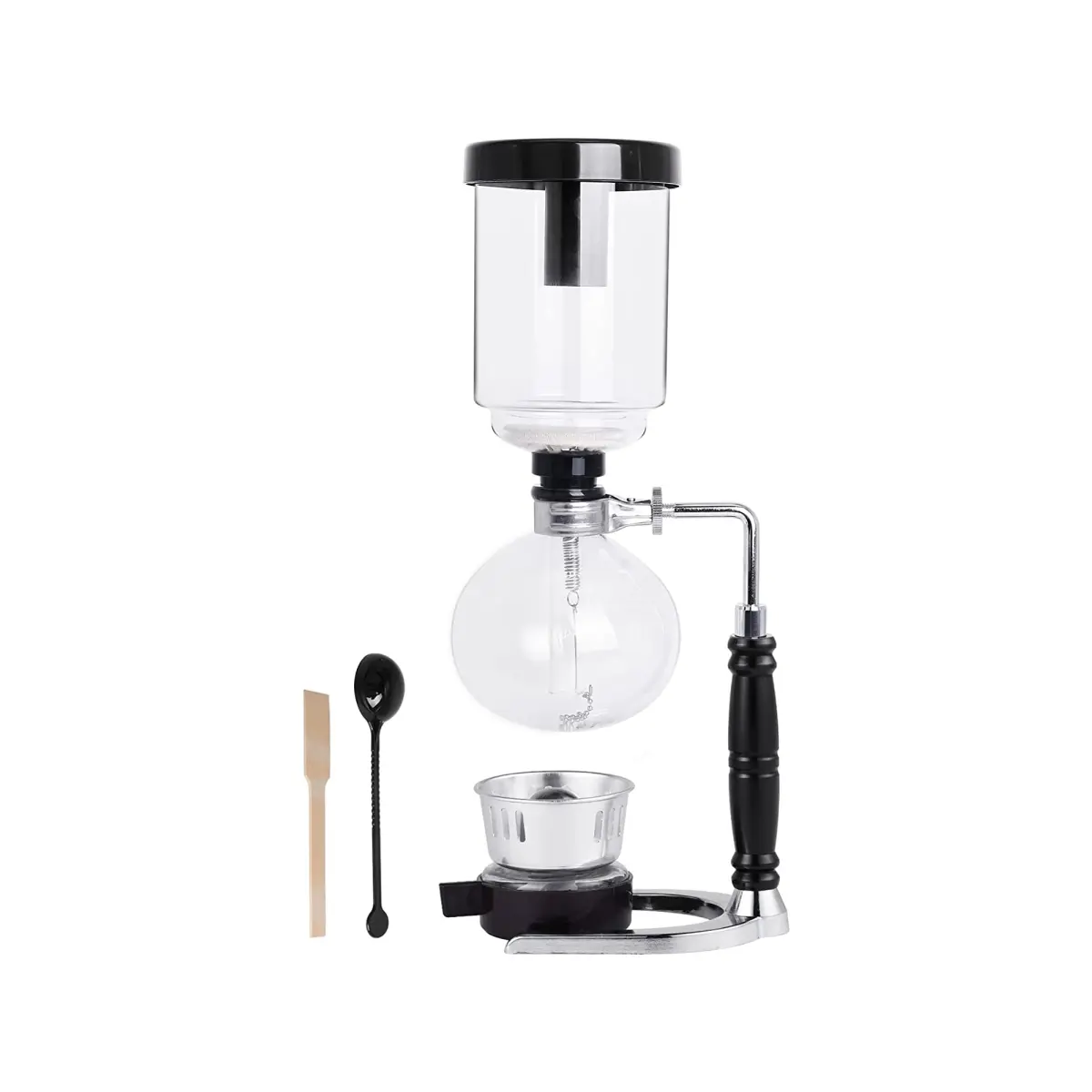
High-temperature resistant glass coffee maker with adjustable clamp and stainless steel base.
Key Features:
- Wipe the lower pot with a dry towel before heating
- Push down the upper pot tightly when inserting
- Hold the handle of the lower pot with your left hand when pulling up the upper pot
Pros:
- Authentic Japanese coffee: The YUCHENGTECH Japanese Coffee Maker is designed to replicate the pour-over brewing method commonly used in Japan, allowing you to enjoy the rich and aromatic flavors associated with this style of coffee.
- Compact and portable: This coffee maker is compact in size, making it ideal for small kitchens, offices, or travel. Its lightweight design ensures easy portability, allowing you to brew your favorite coffee anywhere you go.
- User-friendly: With its simple and intuitive design, the YUCHENGTECH Japanese Coffee Maker is easy to use, even for beginners. You can quickly master the technique of pouring hot water over the coffee grounds to achieve the desired taste.
- Easy to clean: The coffee maker consists of a few detachable parts, making it easy to disassemble and clean. This ensures that maintenance and upkeep are hassle-free, allowing you to enjoy your coffee without worrying about cleaning difficulties.
Hario Technica Glass japanese Coffee Maker
⭐ 4.7/5 • 💰 ~$84
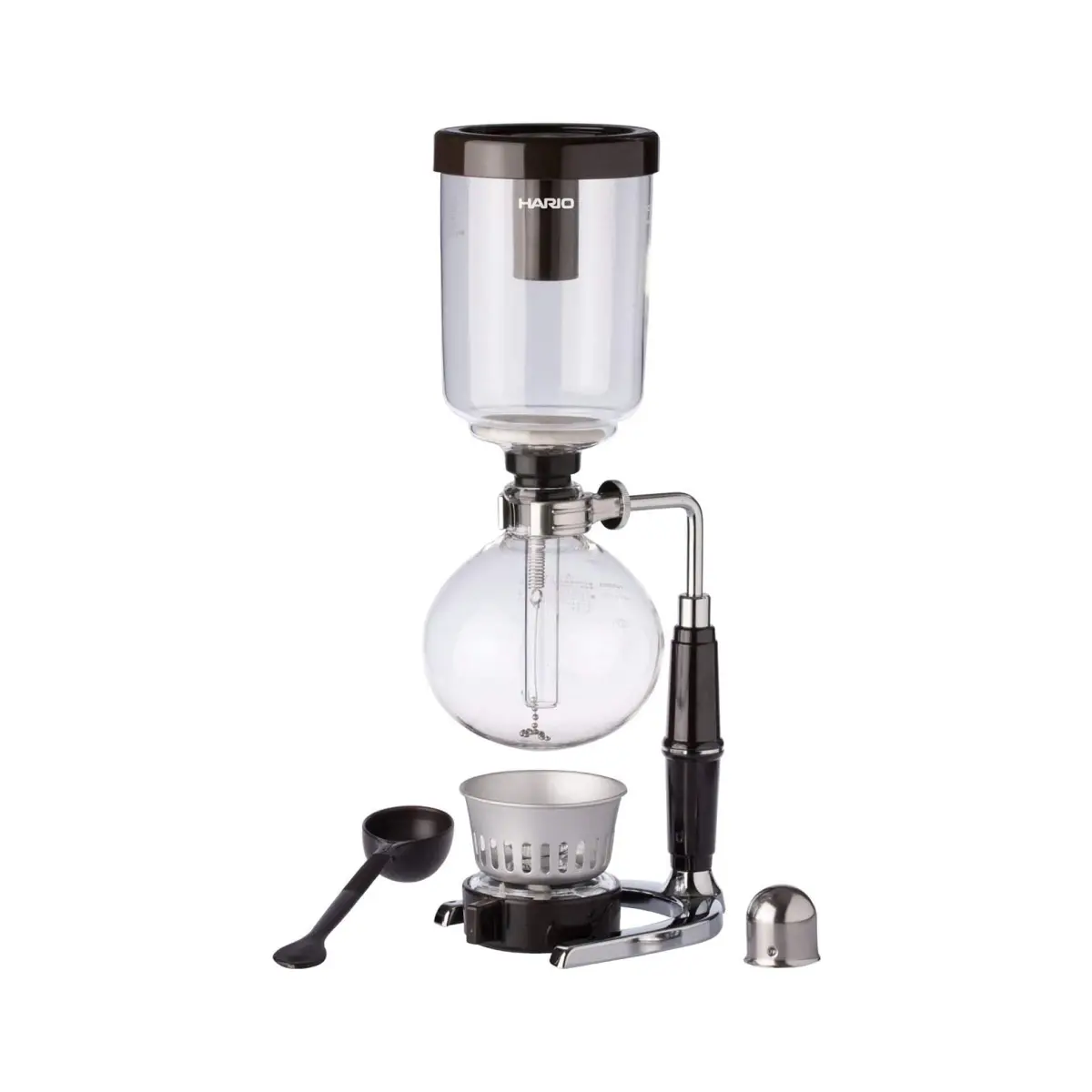
Hario Technica Glass Syphon Coffee Maker, 600ml for $84.05 USD
Key Features:
- 5 Cup Capacity
- Item dimmensions are: 14”H x 6.2”W x 4.3”L
Pros:
- Superior coffee quality: The Hario Technica Glass Japanese Coffee Maker is renowned for its ability to produce a clean and flavorful cup of coffee. The pour-over brewing method allows for precise control over water temperature and extraction, resulting in a rich and aromatic coffee experience.
- Durable and high-quality construction: Made from high-quality heat-resistant glass, the Hario Technica is built to last. Its sturdy design ensures durability, and the glass material is non-reactive, preserving the natural flavors of the coffee without imparting any unwanted tastes.
- Timeless and elegant design: With its sleek and minimalist aesthetics, the Hario Technica Glass Coffee Maker adds a touch of elegance to any kitchen or coffee station. Its transparent glass construction allows you to observe the brewing process, making it a visually appealing coffee-making experience.
- Easy to clean: The coffee maker is composed of a few simple parts, making it easy to disassemble and clean. The glass carafe and the removable filter holder can be rinsed with water, and occasional deep cleaning can be done with mild soap. This makes maintenance a breeze and ensures a hygienic brewing process.
FOSHAN Japanese Style Siphon Coffee Maker
⭐ 5/5 • 💰 ~$64
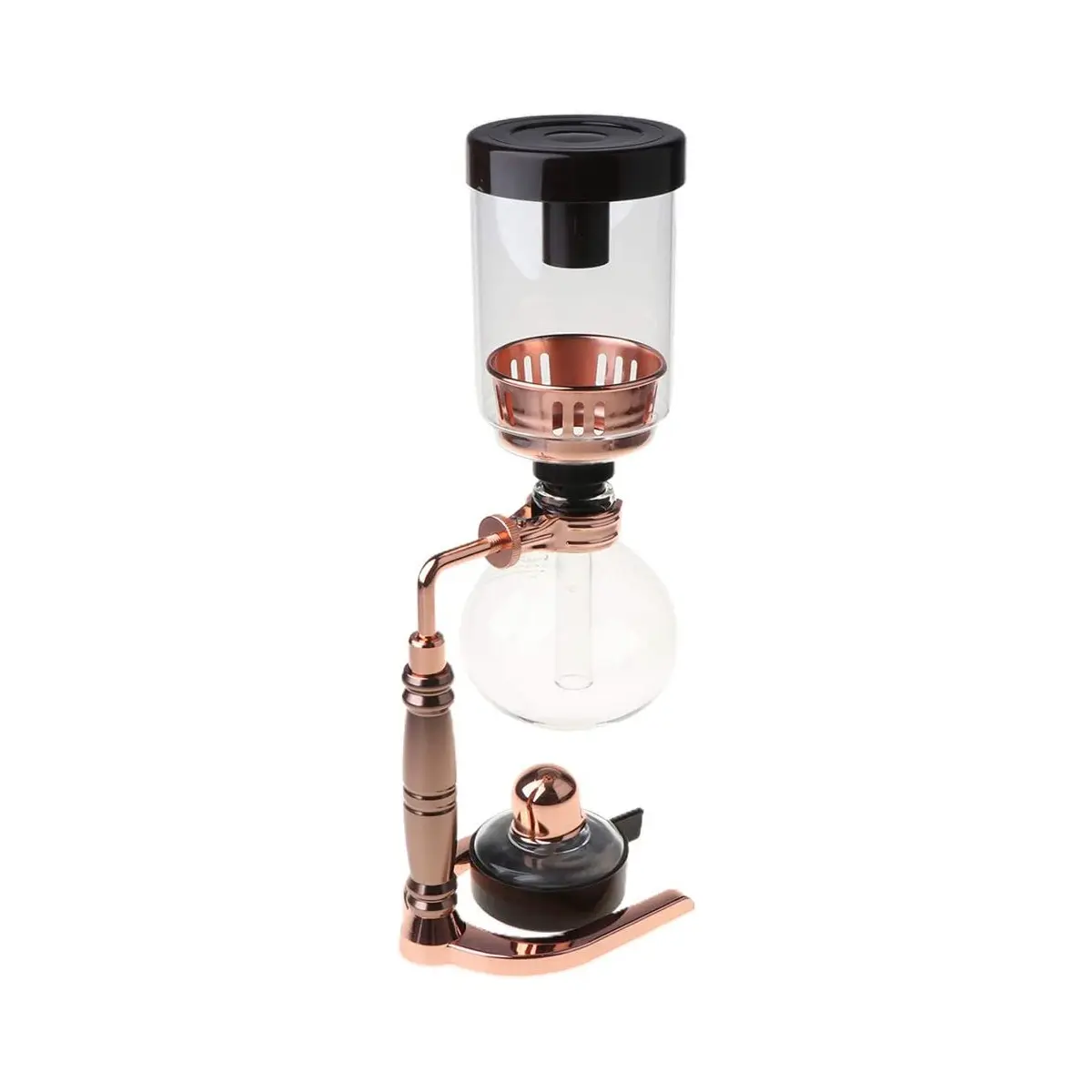
FOSHAN Japanese Style Siphon Coffee Maker with 3 cup capacity for delicious coffee.
Key Features:
- Size: 36 × 15 × 13.5cm
- Color: Gold, black, rose gold
- Material: glass
Pros:
- Visual spectacle: The FOSHAN Japanese Style Siphon Coffee Maker offers a mesmerizing brewing process that combines science and art. The siphon method involves a glass chamber where water is heated and rises to the upper chamber, creating a captivating visual display that adds a touch of excitement to the coffee-making experience.
- Exceptional coffee flavor: The siphon brewing method is known for its ability to extract the full flavor and aroma of the coffee beans. The resulting coffee is often smooth, clean, and rich, with a delicate balance of flavors that can be difficult to achieve with other brewing methods.
- Temperature control: The FOSHAN Siphon Coffee Maker allows for precise temperature control during the brewing process. This control ensures that the water is heated to the optimal temperature, promoting even extraction and enhancing the overall coffee quality.
- Easy to clean: The coffee maker’s detachable glass chambers and filters make it relatively easy to clean. After use, the components can be disassembled and washed with warm water and mild soap, ensuring a hygienic brewing environment.
The History of Japanese Coffee Makers
Coffee was introduced to Japan in the 17th century, primarily through Dutch traders. Initially, coffee was consumed in limited quantities by the elite, but its popularity gradually grew among the general population. In the early 20th century, coffee houses started to emerge, becoming social hubs for intellectuals and artists.
In the 1920s, Hario, a renowned Japanese glassware company, played a significant role in the development of coffee brewing methods. They introduced the “siphon” or “vacuum” brewing technique, utilizing two chambers and a cloth filter. This method, known as the Hario Technica, became a hallmark of Japanese coffee makers. It provided a clean and flavorful brew, highlighting the nuanced flavors of the coffee beans.
After World War II, Japan experienced an increase in technological advancements and a growing interest in coffee. This led to further innovations in coffee brewing. In the 1950s, Japanese companies like Yama and Sanyo introduced electric siphon coffee makers, offering convenience and ease of use.
In recent decades, Japanese coffee makers have continued to evolve in both functionality and design. Manufacturers like Hario, Kalita, and Hotta Corporation have introduced a range of coffee makers with various styles, materials, and brewing techniques. Some models incorporate glass, stainless steel, or heat-resistant plastic, providing durability and aesthetic appeal. Japanese coffee makers are known for their meticulous craftsmanship, attention to detail, and pursuit of excellence.
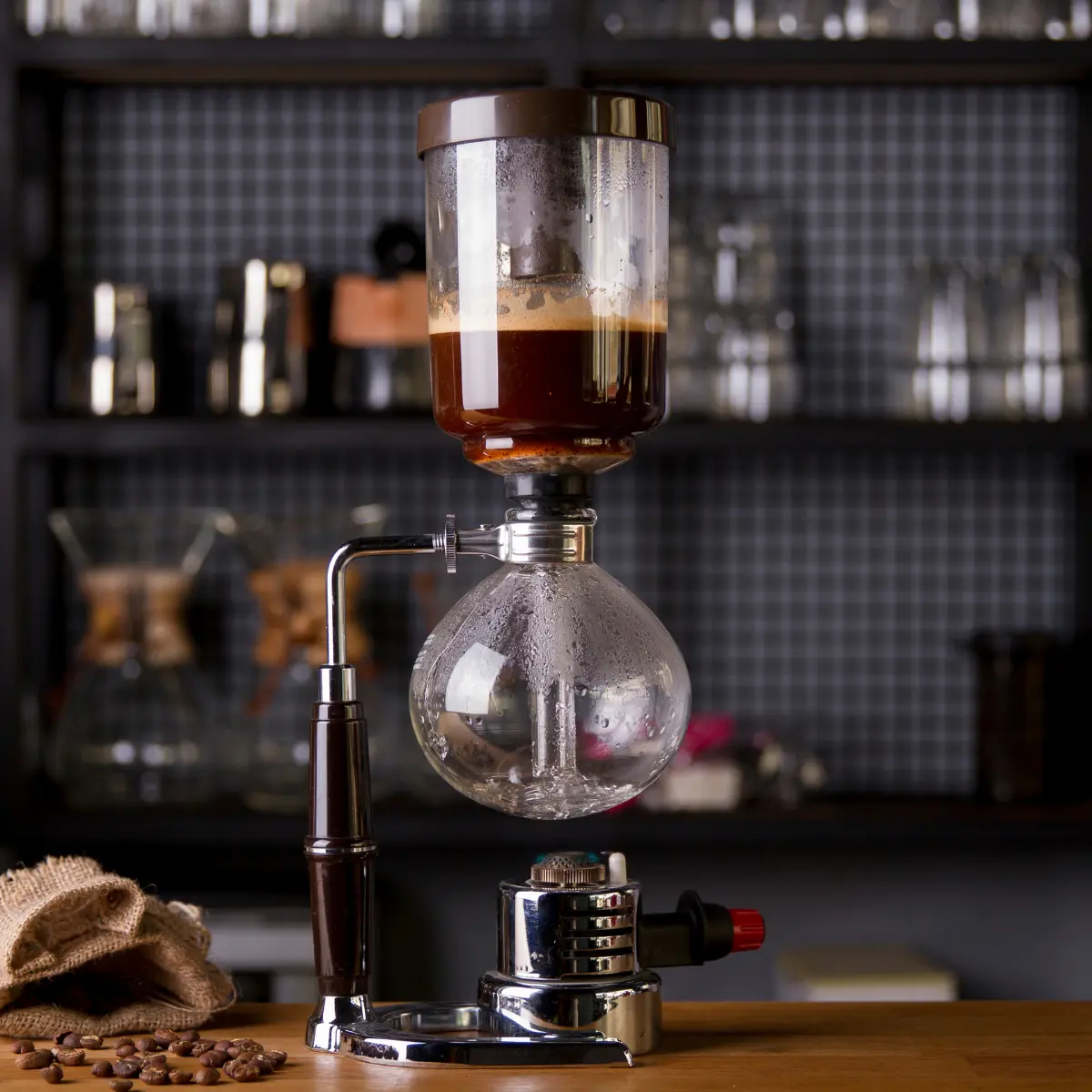
Japanese Coffee Maker is Perfect for Camping - No Need of Electricity!
A Japanese coffee maker is perfect for camping due to its portable and versatile nature. These coffee makers are often compact, lightweight, and designed for outdoor use. They don’t require electricity, making them ideal for camping where power sources may be limited. Japanese coffee makers utilize heat sources such as portable stoves or campfires to heat the water, allowing you to enjoy a freshly brewed cup of coffee in the wilderness. Their durable construction and simple operation make them suitable for outdoor environments. Additionally, the brewing process of a Japanese coffee maker can be an enjoyable and engaging activity, enhancing the overall camping experience.
The Benefits of Japanese Coffee Makers
Japanese coffee makers offer several benefits that make them stand out among other brewing methods. Here are some key advantages:
- Enhanced Flavor: Japanese coffee makers are renowned for their ability to extract rich, aromatic flavors from coffee beans. The vacuum brewing process ensures a clean and crisp taste, showcasing the nuances and subtleties of the coffee.
- Precise Brewing: These coffee makers often feature precise temperature controls and consistent brewing parameters, allowing you to achieve a consistent and repeatable brew every time. This level of precision helps in achieving the desired flavor profile.
- Aesthetic Appeal: Japanese coffee makers are known for their elegant and visually appealing designs. Crafted with attention to detail, they can be a stylish addition to your kitchen or coffee brewing setup.
- Engaging Brewing Experience: The brewing process of a Japanese coffee maker is captivating and mesmerizing to watch. The combination of heat, vapor, and vacuum creates a theatrical experience that adds an element of enjoyment to the coffee brewing ritual.
- Portable and Versatile: Many Japanese coffee makers are designed to be portable, making them suitable for various settings, including camping, travel, or outdoor adventures. They are often lightweight and do not require electricity, allowing you to enjoy quality coffee anywhere.
- Durability and Longevity: Japanese coffee makers are typically crafted with high-quality materials such as heat-resistant glass and stainless steel. This ensures their durability and longevity, making them a wise investment for coffee enthusiasts.
- Sustainable Brewing: Japanese coffee makers often utilize reusable filters, reducing the need for disposable paper filters. This eco-friendly approach contributes to sustainable coffee brewing practices.
How do you use a Japanese Coffee Maker?
Using a Japanese coffee maker, also known as a siphon or vacuum coffee maker, may seem intricate at first, but once you get the hang of it, it becomes a straightforward process. Here’s a step-by-step guide:
- Set Up: Begin by assembling the coffee maker. It typically consists of two chambers, a bottom chamber for water and a top chamber for coffee grounds, connected by a tube. Attach the tube securely to both chambers.
- Preheat: Fill the bottom chamber with water and place it over a heat source such as a portable stove or open flame. Preheat the water until it starts to generate steam.
- Add Coffee: While the water is preheating, grind your coffee beans to a medium coarseness. Add the desired amount of coffee grounds to the top chamber, ensuring it has a filter in place.
- Assemble: Once the water is preheated, carefully position the top chamber with the coffee grounds on top of the bottom chamber containing hot water. Ensure a tight seal between the two chambers.
- Brewing Process: As the water heats up in the bottom chamber, vapor pressure will force it up through the tube and mix it with the coffee grounds in the top chamber. Stir the mixture gently to ensure even extraction.
- Brew Time: Allow the coffee to brew for around 1-2 minutes, depending on your desired strength. Keep an eye on the water level in the bottom chamber to prevent it from boiling over.
- Remove Heat: After the desired brew time, remove the heat source. As the bottom chamber cools down, a vacuum will be created, drawing the brewed coffee back down through the tube into the bottom chamber.
- Serve and Enjoy: Once the coffee has fully descended into the bottom chamber, carefully separate the two chambers. Pour the freshly brewed coffee into your cup or server, leaving any sediment behind.
- Clean-Up: Allow the coffee maker to cool down before disassembling it. Dispose of the used coffee grounds and rinse the chambers and filters with warm water. Clean the coffee maker thoroughly after each use.
With practice, using a Japanese coffee maker becomes a fascinating and rewarding process, resulting in a delicious cup of coffee with unique flavors and aromas.
Conclusion
Japanese coffee makers offer a captivating and flavorful brewing experience that sets them apart from other brewing methods. Their precise engineering, elegant designs, and meticulous attention to detail contribute to the production of exceptional coffee. Whether you’re seeking a rich and nuanced cup of coffee at home, exploring the outdoors, or simply appreciating the art of brewing, Japanese coffee makers deliver on all fronts. With their portable nature, durability, and the ability to brew coffee without electricity, they offer versatility and convenience for various settings. By embracing a Japanese coffee maker, you invite a touch of craftsmanship, flavor, and aesthetic appeal into your coffee brewing routine. Discover the delight of this unique brewing method and elevate your coffee experience to new heights with a Japanese coffee maker.
